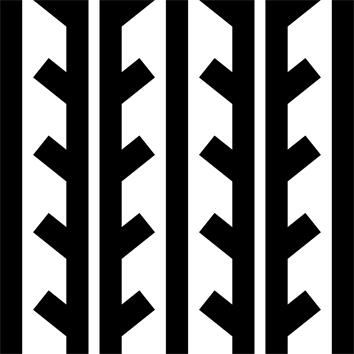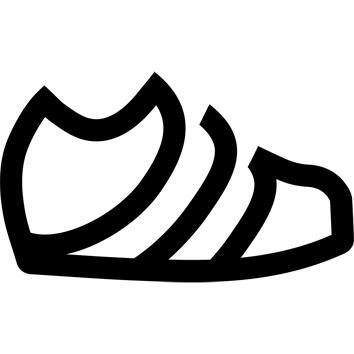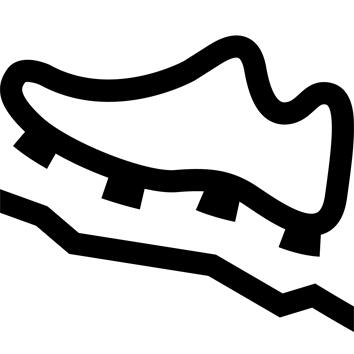Adhesive soles
Designed in our laboratories, we use a specific rubber formulation to optimize the grip and adherence of these soles. We systematically seek the best compromise between grip on greasy ground and grip on dry ground.
Designed for touring use
Our hiking boots are designed for use on footpaths. In fact, we select and test the sole and upper components of our shoes to ensure they are ideally suited to hiking on soft trails (such as dirt forest paths) or mineral trails (such as rocky coastal paths). Use on roads (asphalt) may accelerate wear and cause discomfort. They are not suitable for mountain hiking.
Resistance tests
Laboratory tests are carried out to validate the following elements: eyelet and strap pull-off, gluing, toxicology, UV resistance, abrasion of sole and upper components, accelerated ageing. These tests enable us to improve the quality of our products and prevent premature wear of our hiking boots.
Comfort
The singular promise of our nature hiking shoes is exacerbated comfort for the wearer, so we've added a number of ingredients to care for your feet, such as an EVA (soft thermoplastic) insole and a heel pad in the same material.
We've also made the insole removable for greater hygiene (it can be washed).
Which pair of socks goes with Quechua NH100 MID shoes?
These shoes offer a little breathability, but not enough to wick away all the moisture from your perspiration. We therefore recommend Hike 50 Mid socks: they contain moisture-absorbing cotton and have a loop construction that wicks moisture away from your foot. They're also high enough to protect your ankle from the shoe. It's an excellent combination for limiting the appearance of blisters.







